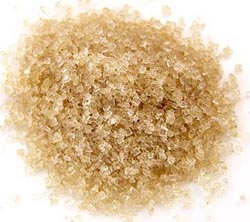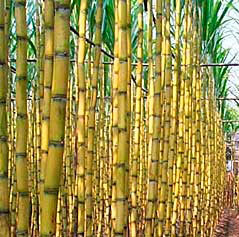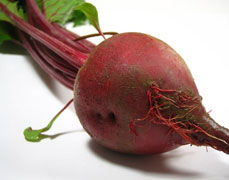




Sugar cane. Beet sugar
Do you think aboute what is the sugar at home: from sugar beets or sugar cane? Perhaps, it is a beet sugar. But clearly this question cannot be answered! Sugar can be got from sugar beet and cane (by the way, in some countries sugar cane is the most preferred, and it can bring to us.)
Interestingly, the chemical formula of sugar cane and sugar beet - the same. But every "rule" has exceptions, there are differences. The difference lies in the masses of isotopes of carbon atoms (course - defined with special devices) and is about 8%. The isotopes 12C and 13behave differently in chemical reactions occurring in the tissues of a organism. Everyone knows the photosynthesis of plants - from the air CO2 (carbon dioxide) is absorbed, the products of decomposition of organisms (oil, peat, coal) - mainly present isotope 12C, that is more lightweight compared with 13C. But, if we compare the carbonates of seawater, that's where the isotope 13C increased (clams, sea shells).
So, back to sugar. Sugar cane and sugar beet are plants and therefore they also is in the process of photosynthesis: from carbon dioxide and water is got a complex organic substance - sucrose. The photosynthesis process can go two different ways. The first is the original receipt phosphoglyceraldehyde acid, CH2(OPO3N2)-CH(OH)-COOH, and then, with the help of enzymes (biological catalysts), it turns to fructose. Fructose is partially converted into glucose. Glucose and fructose with the action of enzymes are converted to sucrose.
The other method is to obtaining oxaloacetic acid HOOC-CO-CH2-COOH.
Different plants have preferences for one or the other method of producing sucrose. For example, for sugar beet preferred the first method of photosynthesis, and sugar cane, maize is the second. Corn, for example, are able to assimilate carbon dioxide, even at night (light is optional). Formed in the dark in the morning an organic acid involved in the formation of sucrose. This may explain the rapid maturation of corn and sugar cane.
How ripen fruit
When we try to taste unripe fruits, we feel sour taste (think of unripe apples or plums). The longer a fruit hanging on the tree, the sweeter it becomes. Why is it so:
We all know organic acids (citric, malic and tartaric). They are parts of the unripe fruits and are responsible for their respiration and metabolic processes during growth. When the fruit produces acid, i.e. ripe, the concentration of these acids is significantly reduced. Inside the fruit is the hydrolysis of starch (that is its dissolution), from which produce glucose.
Inside the cells of unripe fruits and vegetables contain pectin substances, which are the remnants of organic acid - galacturonic. With the action of enzymes (organic catalysts), chemical bonds between some molecules of acid are torn and pectin substances become soluble.This explains why, ripe fruits become softer. The same happens if fruits and vegetables are boiled.
When cooking or when heated and in the presence of carbohydrates from pectin got jelly (or gel). For example, if you cook jam! The solution containing pectin over time thickens.
Visually, the shape of such molecules (pectin molecules) can be represented as a 3-dimensional grid, inside of which is water with dissolved in it various mineral salts and sugar.
You may also have noticed that the color of ripe fruit is brighter than unripe. This is because the action of enzymes in the fruit during its maturation increases, that is, improves the synthesis of carotenes and anthocyanins, that are natural dyes for fruits and vegetables.